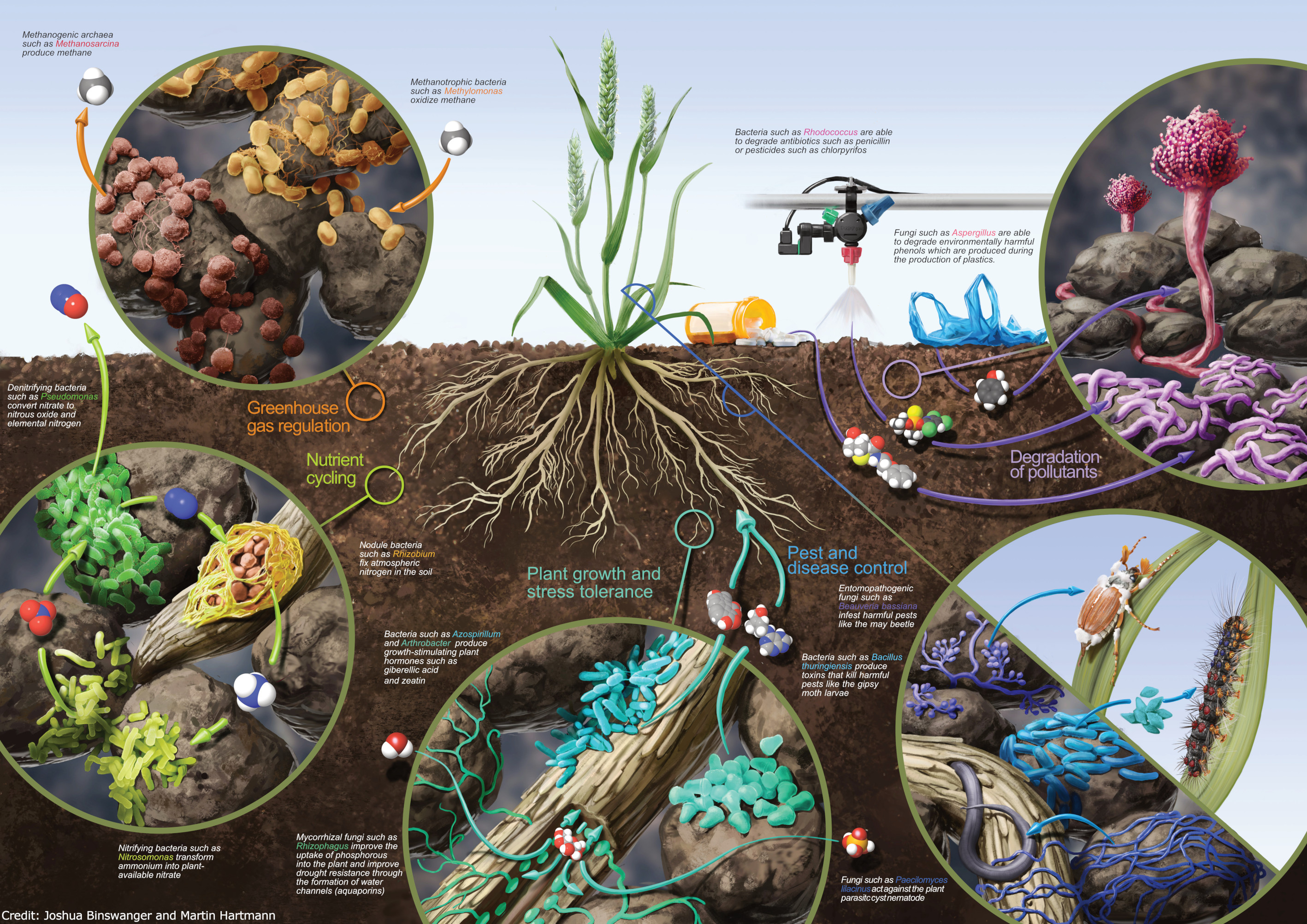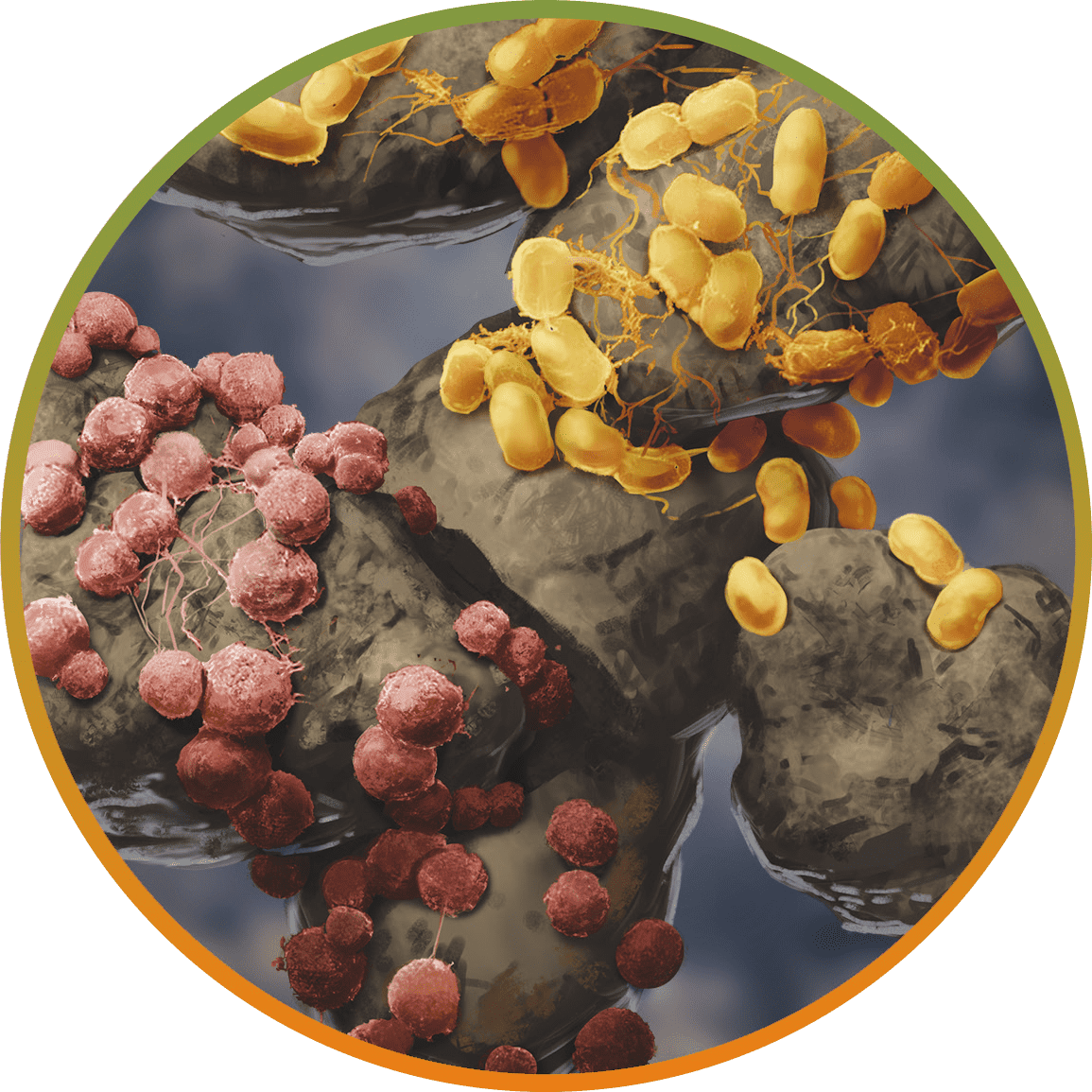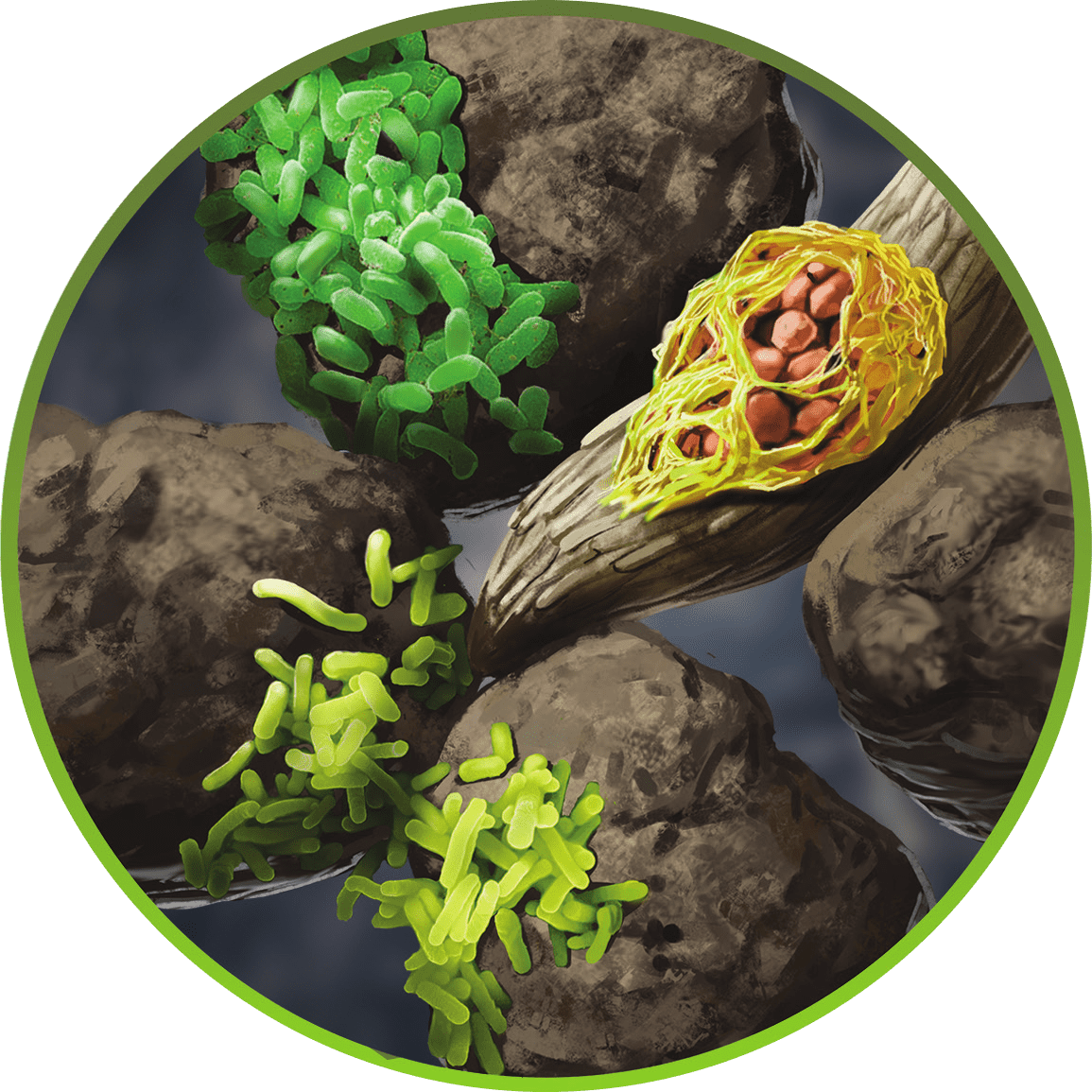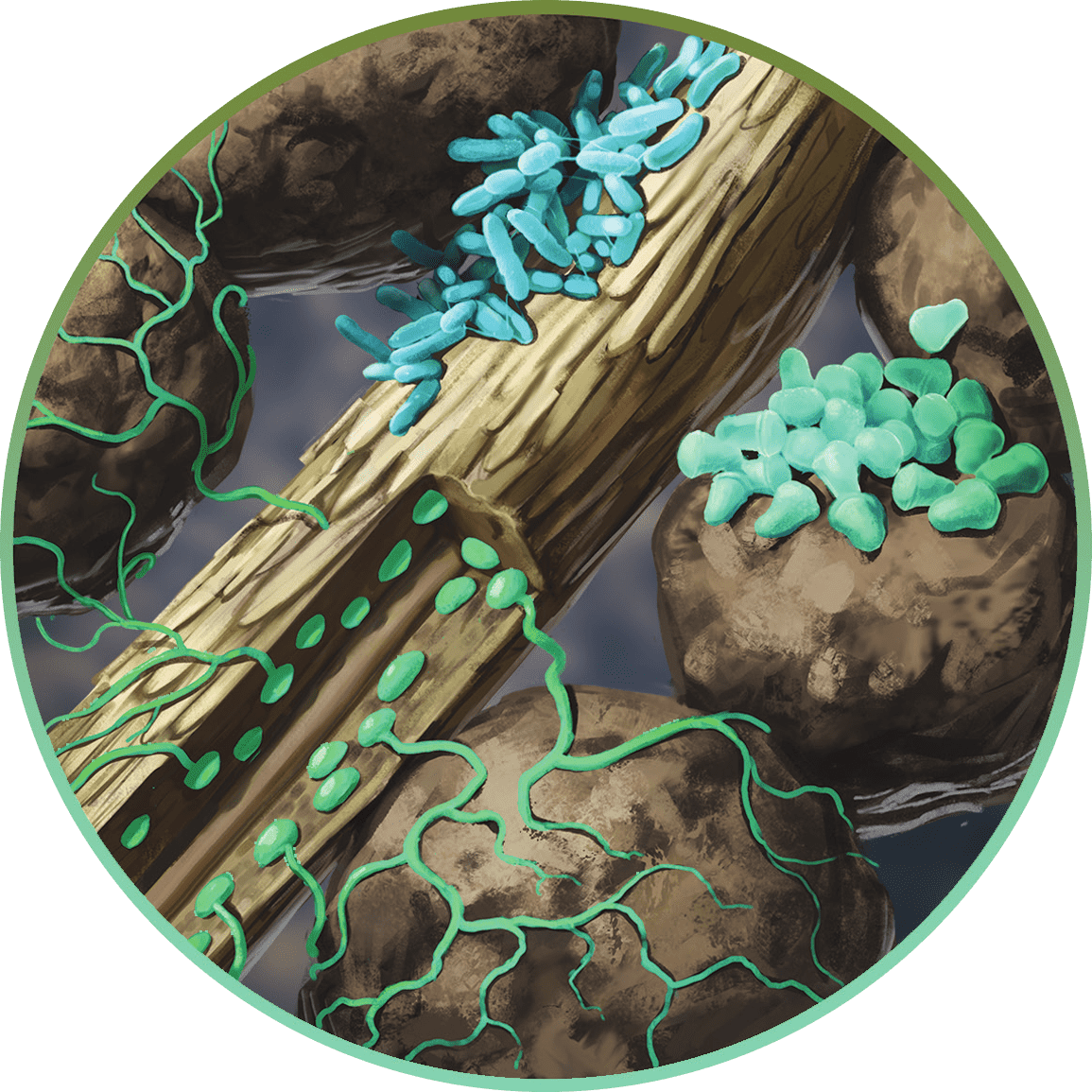Engines of the Earth
Microbial key functions in the plant-soil system. Soil microorganisms
play essential roles in climate regulation, nutrient cycling, plant
growth promotion and abiotic stress tolerance, pest and disease control, and pollutant degradation (Image: Joshua Binswanger). To learn more about key ecosystem functions provided by the soil microbiome, read the article Soil structure and microbiome functions in agroecosystems in Nature Reviews Earth & Environment.
Climate regulation
Soil microorganisms regulate the terrestrial fluxes of relevant greenhouse gases such as carbon dioxide, nitrous oxide, and methane. Methanotrophic bacteria such as Methylomonas absorb methane. Methanogenic archaea such as Methanosarcina produce methane (Image: Joshua Binswanger).
Nutrient cycling
Soil microorganisms engage in decomposition and transformation of organic and mineral matter, from which they make nutrients available to the plant. Nodule bacteria such as Rhizobium fix atmospheric nitrogen. Nitrifying bacteria such as Nitrosomonas convert ammonium into plant-available nitrate. Denitrifying bacteria such as Pseudomonas convert nitrate to nitrous oxide and elemental nitrogen, completing the cycle (Image: Joshua Binswanger).
Plant growth promotion and abiotic stress tolerance
Soil microorganisms promote plant growth by producing growth-promoting hormones or by increasing the plant's tolerance to environmental stressors such as drought. Bacteria such as Azospirillum und Arthrobacter produce growth-stimulating hormones such as gibberellin and zeatin. Mycorrhizal fungi such as Rhizophagus enhance uptake of phosphorus into the plant and improve drought resistance by stimulating the formation of water channels called aquaporins (Image: Joshua Binswanger).
Pest and disease control
Soil microorganisms help the plant defending against pests by eliminating pests directly or by enhancing systemic plant defense mechanisms. Entomopathogenic fungi such as Beauveria bassiana attack harmful insects such as the may beetle. Bacteria such as Bacillus thuringiensis produce toxins that kill pests such as the gypsy moth caterpillar. Fungi such as Paecilomyces lilacinus are effective against plant-parasitic cyst nematodes (Image: Joshua Binswanger).
Pollutant degradation
Soil microorganisms can break down pollutants from pesticides, medicines, or plastic residues. Fungi such as Aspergillus can break down pollutants like phenols, which are produced in the production of plastics. Bacteria like Rhodococcus are able to degrade antibiotics like penicillin or pesticides like chlorpyrifos (Image: Joshua Binswanger).





